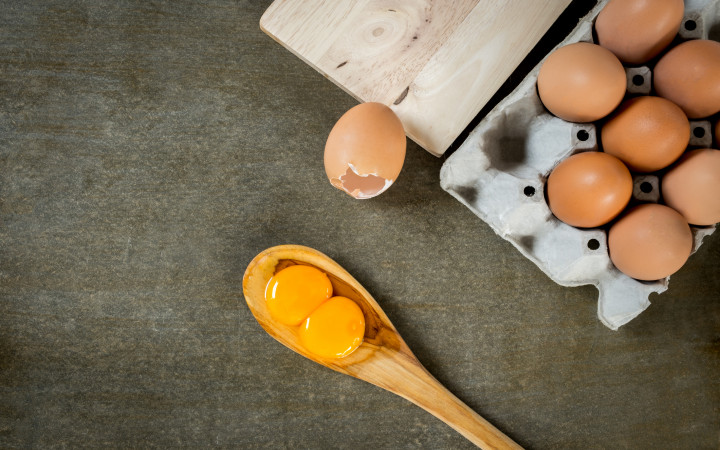Today’s Wonder of the Day was inspired by Tanner. Tanner Wonders, “What would happen if an egg with two yolks hatched?” Thanks for WONDERing with us, Tanner!
Whether you're whipping up an omelet or baking a batch of cookies, one of the great joys of childhood cooking is the cracking of the eggs. Every once in a while, however, Mother Nature has a surprise up her sleeve — or in this case — hidden inside a shell.
Whether you prefer yours scrambled, hard-boiled, or baked in a chocolate cake, let's go for a journey down on the farm to do some egg-sploring and crack one of the great mysteries of the egg.
Known by some as “the food with a heart of gold," the egg received its nickname thanks to its sunny, golden center — the yolk! What eggsactly is a yolk, you may WONDER?
In a fertilized egg, the yolk provides a source of food for the developing embryo. As the chick matures, it pulls nutrients from the yolk until it is strong enough to break through and join its peeps on the farm.
Have you ever cracked open an egg to find two golden yolks snuggled inside the same shell? A common misconception is that a double-yolk comes from a “twin egg." It may be possible for a fertilized double-yolk egg to produce twin chicks, but the eggs we purchase at the grocery store are not fertilized.
While there are some breeds of hens capable of producing double yolks, most double-yolked eggs we discover inside the cartons on our refrigerator shelves are simply biological practice swings. The majority of these double-yolk eggs are produced when a hen is still quite young and her body is adapting to egg-laying.
Once in a while, hens may even produce an egg with no yolk at all. These rare eggs are known as “wind eggs" and usually occur during a hen's first egg-laying effort.




